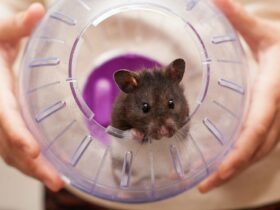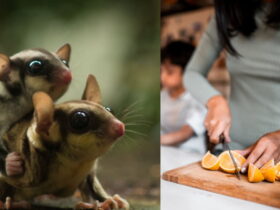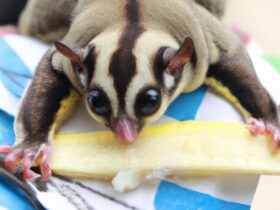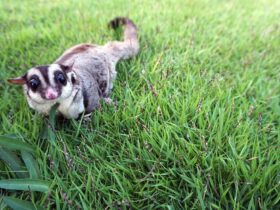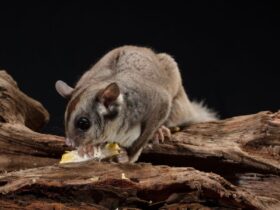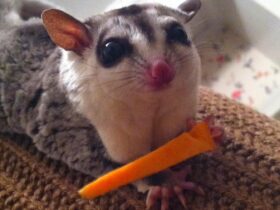Sugar gliders are classified according to their hair color. Sugar gliders with rare coat colors are rare because of the genetic reasons for different hair colors. The price is different for other things. There are 8 types of sugar gliders that you don’t have heard of.
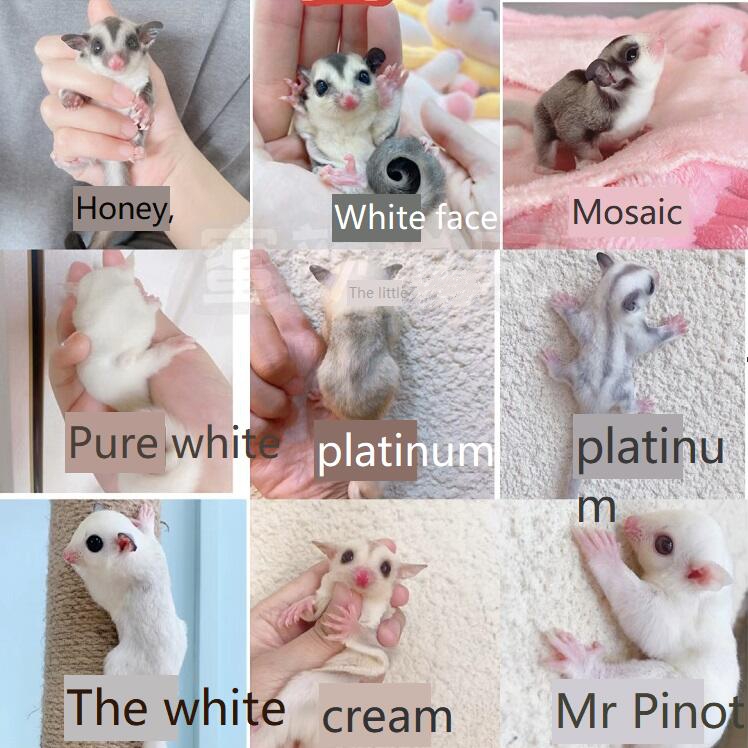
1. Standard grey
The primary coat color of sugar gliders is known as Classic gray. The whole body covers in gray fluff, from the top of the head to the base of the tail, with gray stripes running through the body. Black eyes and black ears are the same color. In addition to the other sugar gliders introduced in the article, most of the general sugar gliders are part of the classic gray series.
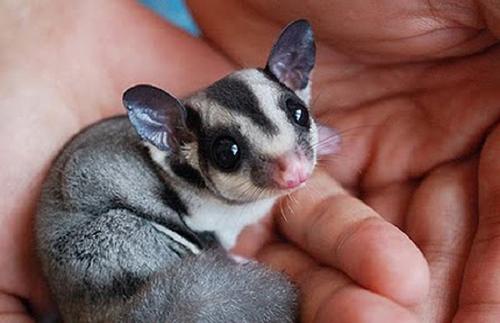
2. White Face
The white face is a relatively common coat color for sugar gliders. The coat color of each body part is the same as the classic gray. The main difference is the coat color on the face. The identification standard is that the coat color below the ears is white, and the stripes on the front are relative. The area of classic gray is small, and the area of light color is significant. If the light color of the head is white, it is a white face.
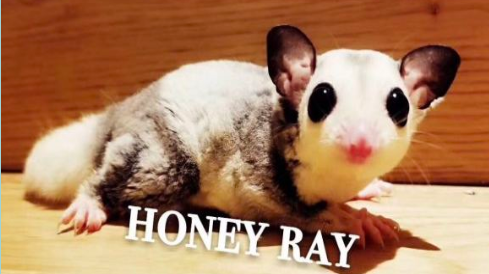
3. Mosaic Variations
Mossack is a vast category, ranging from the slightest degree of variation to the most roughly following manifestations.
3.1 General Mosaic
Standard Mosaic refers to the appearance of white hair on the body, with a white head and a white tail. The white head and the brown-grey on the back form a strong contrast, and the back has the pattern of standard sugar gliders. The ratio of black and white isn’t explicitly stipulated in the standard Mosaic. If the tail, back, limbs, and body hair appear simultaneously, it can be called a standard Mosaic.

3.2 White-tailed Mosaic
As the name suggests, only the tail is pure white, and the rest of the body looks like normal sugar gliders.
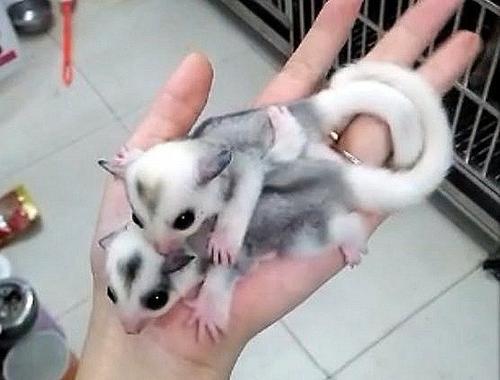
3.3 Whitetail plus white-collar Mosaic
It is characterized by the fact that the base of the white tail is also white on the back of the head and neck, forming a white patch similar to a scarf.
3.4 Ringtail Mosaic
Ringtail mosaic means the tail will be separated from the other colors to form a ring. There are three rings on the tail of the ring that is either black, white, or gray. The base of the tail is better for the appearance of the coat colors than the distance between them.
There are two ringtails: one is composed of a ring and a black and white, brown ring on the tail. The white face of the rest of the body is called the sugar gliders. The whitetail or white scarf Mosaic is similar to the other physical features.
The tail has a faint black ring pattern, which is not as straightforward as the ringtail mentioned above. The so-called high white ringtail can not be seen. The tail will turn white first if the melanin is not present. A face with a ringtail coat is more likely to be white than a face without a coat.
3.5 Platinum Colored Mosaic
Platinum Colored Mosaic means that the features of the markings and stripe lines of the sugar glider are similar to those of the platinum hair color. Still, the overall color is darker, the ends of the limbs may appear pure white without gray hair, and the tail is more likely to be completely white. Based on the standard Mosaic, it is whiter, black is lighter, and it is off-white. There can be a backline, or the backline can be smudged. Body color distinguishes it from the standard Mosaic; the most significant difference from Platinum is that the tail is pure white.
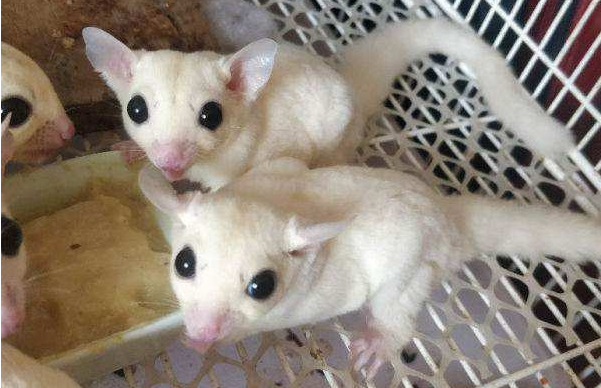
3.6 White Mosaic
There are many differences between White mosaics and other mosaics. White Mosaic first means that the primary color of the whole body is white, but there will be darker hairs, such as dark gray at the stripe lines and irregular black spots in the ears, which will not be the same as other sugar gliders. White or pale limbs are generally black or white. There are fewer and fewer gray areas based on Platinum Mosaic, which is called White Mosaic. Most of the body is white, and the ears are mostly flower. The whole body is white, and the ears are black, which is also a white Mosaic.
4. Platinum/Platinum Champagnes
Platinum Champagne is very different from Platinum Mosaic. They are both genes, and the body color is similar. There is no yellow color in Platinum. The head and body have the same pattern as a honey glider, and the rest of the body is gray-white. The tip of the tail is black. There is a noticeable difference between the Platinum Mosaic and this one.
Leucistic/BEW (Black Eyed White)/pure white is a sugar glider with black-eyed Albino, also known as white sugar or pure white. As the name suggests, the whole body is pure white, without any gray or black eyes, except for the eyes. No black can appear on any part of the body. In childhood, very light yellow headlines on the forehead may gradually disappear with age.
5. Creme-ino
The meaning of creme-ino is that the color is not the same as Albino. There are striped lines from the top of the head to the tail, but the striped lines are light brown and have a little gray hair. The color of Creme-ino is not the same as Albino. Leucistic’s coat color is weak, and the tail end is dark gray or brown, which is the same color as Albino’s, and the body and head have ordinary sugar glider lines.
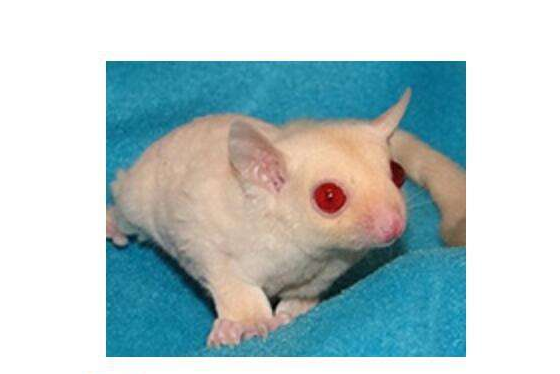
Albino without texture is similar to creme-ino without consistency. It’s essential to distinguish white sugar from wine red creme-ino’s eyes are wine red, and it’s necessary to distinguish white sugar from wine red creme-ino’s eyes wine red, and it’s essential to distinguish white.
6. Albino
It is a pure albino sugar glider with red eyes, no lines on the body, and a creamy white body that is not the same as the Leucistic coat (Leucistic is snow white).
7. Melanism
Black sugar, or a little black bear, is also called. The body is entirely black, and there are lines visible. The production of a black sugar glider is the opposite of a white sugar glider because of the excessive production of melanin.
8. Jigsaw puzzle
The Jigsaw puzzle is not put into the Mosaic category because it differs from Mosaic. There is a random appearance of plaques with available sugar glider colors on the body, with clear boundaries, and the rest of the body is white or gray. The ordinary blocks of the puzzle have the characteristics of random size and location, which leads to a big difference in the appearance and price of the puzzle.
In conclusion
After reading through the 8 different categories of sugar gliders for this breed, I think you’ll know a little about them and hopefully help you figure out your favorite one to keep as a pet.
Besides, I honestly don’t know which one is the best because they all have a special quality that makes them unique. However, I think it’s safe to say that the white-headed sugar gliders are the most popular because of their beautiful, unique appearance and sweet personality.
